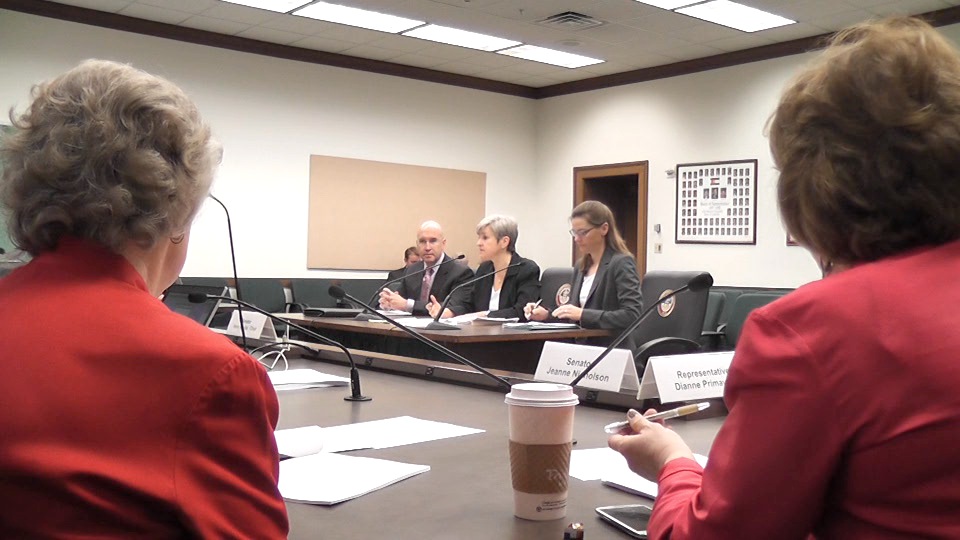By Katie Kerwin McCrimmon
Federal health officials have required Colorado to create contingency plans in case the states health exchange cant function as planned by the beginning of October.
Documents that Solutions obtained show that Colorado health exchange managers are preparing for three primary problems that could undermine the planned Oct. 1 launch:
- A federal data hub that does not work and therefore cannot verify income, immigration status or whether people applying for health plans are living behind bars. A recent report from the Government Accounting Office has found that potential problems with the hub could hamper state exchanges.
- The failure of Colorados Medicaid systems to mesh with exchange systems and produce required real-time determinations of whether adults and children qualify for the states expanded Medicaid programs and the Child Health Plan Plus.
- Failure of the exchanges own IT system to be able to determine if people qualify for tax credits to reduce their costs for health insurance.
Colorado officials already had to deploy one contingency plan earlier this year.
Colorado lawmakers set up the exchange as an independent public agency, not part of state government. Exchange officials and those at the state Medicaid office were planning to build a single shared IT rules engine to determine whether people qualify for Medicaid and are eligible for tax credits.
- Memo from federal regulators requiring new contingency plans
- Colorado health exchange contingency plans
- HCPF contingency plans
- State and HCPF response to federal regulators vow to complete shared eligibility system by 2016
- Earlier contingency plan executed without contingency, Colorado managers predicted delay to 2016
Instead, about six months before the Oct. 1 go-live date, they asked federal regulators for permission to divert from that plan. Medicaid managers now are determining eligibility for their programs, while exchange managers are building the engine to determine tax credits.
The tax credits could apply to all but the wealthiest Americans who are shopping for health insurance and aim to make insurance less expensive. But documents show that state Medicaid managers would not have been able to complete their eligibility system until December of 2014.
Under this scenario, Colorado would not establish a State-Based Exchange until coverage year 2016, exchange officials wrote in their request to federal officials for permission to deploy the contingency plan dividing the single IT system into separate ones. Federal regulators allowed Colorado to change course, but called the diversion only an interim solution.
The State will have a fully shared eligibility service in operation by January 1, 2016, federal officials wrote.
In a written response to Solutions, exchange spokeswoman Myung Oak Kim said that the exchange was never in jeopardy of having to delay its opening until 2016. She said that contingency plans are standard. She declined to say how likely Colorado is to have to deploy the new contingency plans, which federal officials required in March after the exchange and Medicaid managers decided to change their plans for eligibility systems.
There has been a lot of give and take and the need for flexibility. There have been many challenges over the last 18 months, the schedule being chief among them, Kim wrote.
The complexity of our project is significant and as with any project, we have had to regularly reassess plans and make adjustments to ensure a successful implementation.
Incredibly complicated
The exchange is a new online system aimed at making it easier for people to purchase health insurance. Its supposed to be a Travelocity-style shopping platform and must open for enrollment on Oct. 1 providing for health coverage that starts on Jan. 1, 2014. Having seamless communication between multiple digital systems to help serve a large population of uninsured people has proven to be a Herculean task.
The technology is an issue because its incredibly complicated, said Caroline Pearson, an analyst who is studying health exchanges across the country as a vice president for the national consulting firm, Avalere Health. (Her company has consulting contracts with exchanges, including what she described as a small one with Colorados exchange.) Even at the federal level, youve seen complications. The seamless systems where everything happens in real time are not a realistic expectation for 2014.
Thats where we aspire to get at some point, Pearson said. But the idea that its perfectly seamless and real time is a low likelihood anywhere.
While Colorado exchange managers have said that they are seen as a national model, Pearson said its impossible to know if that is true until the exchanges launch.
There are other states that are much worse than Colorado, she said.

A woman named Myrna said that seven health insurance companies turned her down because she had had breast cancer. People like her will be able to get health insurance starting in 2014 because the Affordable Care Act bars insurance companies from turning people down if they have a preexisting condition. (Source: HealthCare.gov)
For instance, New Mexico and Idaho recently had to trip their contingency plans. As a result, the federal government will be much more involved in running their exchanges.
She said snafus with IT systems are sure to emerge. Very soon, all states need to stop building systems and start rigorous testing.
Its hard to know how its going because its mostly happening behind closed doors, Pearson said.
Lorez Meinhold, deputy executive director and head of community partnerships for the Colorado Department of Health Care Policy and Financing (HCPF), the state agency that manages Medicaid, said the contingency plans and concerns that Colorados exchange could have been delayed until 2016 are based on worst-case scenarios.
She said federal officials have required contingency plans for each state that is building its own exchange.
Mike Fierberg, a spokesman for federal health regulators at the Centers for Medicare and Medicaid Services, said this particular letter was Colorado-specific because it was addressing the issues between HCPF and COHBE, and was somewhat unique.
He said states need contingency plans if the systems cannot stand up.
They also include contingencies for how to handle an application after Oct. 1 if theres some glitch in the system at that point in time, Fierberg said. If your system is somehow bogged down or not working properly, how are you going to handle the application?
Federal directives common
Fierberg said the type of letter Colorado managers received is not uncommon, but that federal officials wanted to be sure that theres a successful transfer of data from HCPF to the exchange and vice versa.
There are several ways that this can be dealt with. Thats for them to decide, Fierberg said. We will help them get this decision done and to implement this. We want them to have as much flexibility as they think they need.
Despite a host of difficulties including tight deadlines and last-minute federal rules, both Kim and Meinhold said Colorado health officials will have the exchange working on time.
We continue to work through our technology approach and will have a working solution for a successful opening in October, Kim wrote.
It was not that long ago when outside legal and political challenges put the existence of the marketplace in question. Despite the skeptics, we focused on working with our community and our partners to move quickly with planning to turn a vision of a new public service and business into reality, Kim said.
She said that the exchanges IT experts have been able to establish connectivity with the federal data hub, Colorados IT systems and SERFF, a national system that insurance companies use to file their plans and rates. Testing will continue.

Colorado lawmakers held a hearing in May to review the exchanges request for an additional $125 million in federal funds. Testifying were Rob Ruiz-Moss, an exchange board member who works for Anthem Blue Cross and Blue Shield, exchange CEO and Executive Director Patty Fontneau and Board President Gretchen Hammer, who is also executive director for the Colorado Coalition for the Medically Underserved.
Were going to be ready to go. Were committed to having the exchange and the Medicaid expansion go live, Meinhold said. Its an incredible time to be working to improve health in Colorado. This is a unique time when public and private (insurance programs) are coming together in a new way. We are going to be able to cover about half of our uninsured in this state. That is significant.
Between expanded Medicaid programs and new coverage for people through private insurance, Meinhold expects about 400,000 uninsured people to gain health coverage in Colorado in the next decade.
Planning for last-minute problems
Despite Meinholds optimism, federal regulators required both her agency and exchange managers to outline how theyll handle last-minute problems.
In the contingency plans sent to federal health regulators on April 1, managers of Colorados exchange, now called Connect for Health Colorado,identified three critical risk areas and outlined their proposed solutions:
- If the federal data hub is not ready or fails to work after Oct. 1, managers plan to accept self-attestation on every application. This means people applying for federal tax credits will be able to declare their anticipated income, their immigration status or whether or not theyre incarcerated. Workers behind the scenes will attempt to verify the information manually.
- If exchange IT systems cannot connect with Colorado Medicaid IT systems, workers behind the scenes will have to try to determine manually if a person qualifies for Medicaid. Colorado is one of the states that is expanding Medicaid to a higher percentage of low-income people, so demand for Medicaid is expected to increase once the exchange opens.
- If the exchanges system to determine eligibility for tax credits doesnt work, exchange employees will have to try to do this work manually as well.
Its unclear how well manual income verification will work.
- Rates decent for Colorado health exchange
- Exchange board approves bid for $125 million
- Despite outrage, health exchange wants additional $125 million
- Governor adds deputy to health exchange board
- Mediator to triage health exchange problems
- Risks loom for health exchange technology
- Tech troubles could hobble health exchange
- Long-troubled CBMS ready to deliver
In a February email, Matt Benson, a consultant who works on technology issues for the exchange, shared his concern about income verification with another worker: Another unintended consequence of splitting the rules (engine). Problem: It appears we no longer have a secondary source of income to be used in the reasonable compatibility check for income. Impact: No secondary electronic source of income means that every applicant applying for financial assistance will be compared against their IRS data for reasonableness. We all know how old the IRS data is and we all understand that large volumes of individuals will fail the reasonableness check and be subsequently dumped to a back office manual verification process.
Marivel Guadarrama,HCPFs eligibility policy manager, said that since 2011, Colorado has already accepted self-reported income.
She said that if an applicant for HCPFs programs comes in with a Social Security number, the department can accept what they self-attest for income. Then, they can verify that reported income after the fact with Colorados Department of Labor and Employment.
Because Colorado already does this, she anticipates that HCPF can easily share income information with exchange workers.
Since we have been accepting self-attestation since 2011, it would be a smooth transition to accepting self-attestation with the implementation of the ACA, Guadarrama said.
Exchange officials concurred that self-reported income should work.
For many individuals and families looking for help in paying for their health insurance, we will be able to accept the applicants self-attested projected annual household income. In some cases, if the income varies by a certain percentage from the sources we check, additional verification may be required, Kim wrote.
In order to determine tax credits, health exchanges must use a new income calculator based on modified adjusted gross income. Because thats never been used before, it could be yet another curveball in implementing the Affordable Care Act. Kim anticipates it will work well.
Its a new way to streamline and calculate eligibility for tax credits, Kim wrote.
Behind-the-scenes frustrations
While HCPF and exchange managers meet regularly and both say they are working together, emails and documents show the relationship has been challenging. And Solutions reported in April that the two groups needed help from an outside mediator. (Click here to read more: Mediator to triage health exchange problems.)
Some of the problems seem to result from a culture clash. As an independent entity outside of state government, exchange managers can be more entrepreneurial and can shift quickly as new challenges arise. Meanwhile, HCPF is a government agency with decades of experience doing business in its own way. The two entities have different IT contractors. HCPF uses Deloitte while the exchange hired CGI.
Emails reveal some panic and frustration behind the scenes.

A woman named Teresa says she became ill and was hospitalized in critical condition for three days. She says she was in danger of hitting a cap for coverage. Without the Affordable Care Act, she believes she could have been kicked off her health plan. (Source: HealthCare.gov)
For instance, in an April email, Matt Benson, the exchanges consultant, described struggles between the varying groups as state and exchange officials were trying to work on interfaces for a single streamlined application that all potential customers can use.
The sooner we know if there is a disconnect with Deloitte, the better. CGI has indicated that if we cant agree by next Friday 4/12, the interfaces for 10/1 will all be in jeopardy.
On a Sunday in mid-April, CGIs director of consulting sent a note outlining his frustrations over late change requests from HCPF and its consultant from Deloitte.
Basically, we are in a very difficult situation, wrote Curtis Hensler of CGI. This feedback is 4 months too late. Our approach forinteroperability was agreed upon in our meetings with OIT (Colorados Office of Information Technology) in November and finalized from CGIs perspective in DecemberTo receive feedback at this late date is really unacceptable.
Later in April, exchange officials said they needed to hold the line with HCPF when they were trying to make changes to the single streamlined application.
There are no more changes we can accept, wrote Adele Work, leader of implementation for the exchange. To whom do we need to escalate?
Kim, the exchange spokeswoman, said both HCPF and the exchange are using the same application. Theyve agreed to a final version that is slightly different from the federal application.
An outside analyst from First Data who has been evaluating IT progress for the exchange earlier this year recommended a mediator because HCPF and the exchange are peer organizations and neither supervises the other. That means they have sometimes run into roadblocks that cost the two entities precious time.
In an April 9 email, Gary Schneider, IT project manager for the exchange described his frustrations over the complicated relationship.
I think it goes w/o saying that COHBE (the exchange) and HCPF will need to work very hard to get more effective coordination across all areas else the Final Design Review is going to be very painful. Unfortunately this is a partnership and is paced by HCPF. Dont know what else COHBE can do
In an April 15 email regarding late changes that HCPF wanted to the single streamlined application, Schneider warned of dire consequences if exchange officials didnt hold the line with HCPF.
As you know, any delays in V.5 will likely sink us, Schneider wrote.
Kim said the IT consultants delivered version 5 on May 31 and it is now being tested.
Meinhold, deputy executive director at HCPF, did not want to address issues raised in emails. She said she believes there are pros and cons to having a nonprofit and a state entity try to build the exchange together. Other states are building their exchanges entirely within their Medicaid offices.
Kim said that the structure is helpful.
Senate Bill 11-200 set us up as a separate nonprofit so that we would be able to act quickly and appropriately in the face of very tight time frames. We have been and remain fully focused on implementing the vision established by Senate Bill 11-200 to increase access affordability and choice to individuals and small businesses purchasing health insurance in Colorado, Kim wrote.
Meinhold said in terms of procurement and hiring, the exchange can move much more quickly than a state agency. In terms of other challenges, creating an exchange within a single governmental agency might have been easier. She said all states and the federal government are struggling as they try to set up an entirely new creation.
Theres no perfect path. Its always going to be one of pros and cons, Meinhold said. Thats not unique to Colorado.
